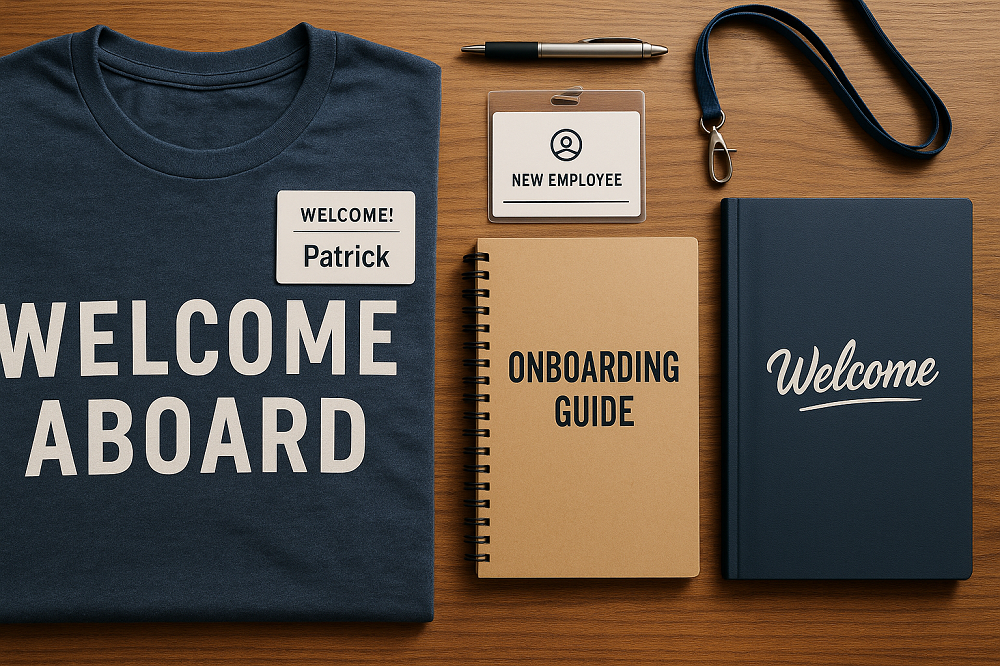Hiring great people is only half the battle. If your employees are walking out the door within a few weeks or months, you’re not just losing talent. You’re losing time, money, and momentum.
Knowing how to onboard employees so they actually stay is one of the most important steps you can take to build a stable, high-performing team. A great onboarding process helps new hires feel confident, connected, and committed to your company. A bad one does the opposite.
The Real Cost of Poor Onboarding
Most small business owners underestimate how much a weak onboarding process is costing them.
Here are just a few of the pain points:
- High turnover: New hires quit when they feel lost, overwhelmed, or unsupported.
- Low productivity: Without clear training, it takes longer for new employees to become effective.
- Team frustration: When new people don’t know what to do, others have to pick up the slack.
- Inconsistent customer experience: Gaps in training lead to mistakes, missed steps, and confusion.
- Wasted time and money: Recruiting is expensive. Doing it over and over makes it worse.
A structured onboarding process fixes these issues by giving every new hire the tools and confidence they need to succeed.
What Onboarding Really Means
(Hint: It’s Not Just Paperwork)
A lot of small businesses confuse onboarding with orientation. Orientation is a one-day event where you fill out forms, sign policies, and get a tour.
Onboarding is different. It’s the full experience of helping someone integrate into your company, learn their role, and feel like part of the team.
A good onboarding process typically lasts at least the first 30 to 90 days of employment, and it includes:
- Clear expectations
- Hands-on training
- Relationship-building
- Regular check-ins
- Feedback and support
Done right, onboarding turns new hires into long-term employees.
Step 1: Prepare Before Their First Day
The onboarding experience starts long before a new employee walks through the door.
Here’s what to do before Day One:
- Set up their tools: Email, logins, computer, desk, uniforms, or any other required equipment
- Notify your team: Let everyone know who’s joining and when
- Assign a mentor or buddy: Choose someone to help guide them for the first few weeks
- Create a welcome package: Include a schedule, company info, and a personalized note
- Block time for training: Make sure managers or trainers are available to support the new hire
When you prepare in advance, you show the new employee they’re valued, and that creates a great first impression.
Step 2: Make the First Day Count
First impressions matter. A chaotic or boring first day sets the wrong tone.
Here’s how to get it right:
- Give a warm welcome: Greet them personally, introduce them to the team, and make them feel included
- Walk through the big picture: Explain your company’s mission, values, and how their role contributes
- Review the schedule: Let them know what to expect during the first week
- Start with something small and achievable: Let them complete a task that gives them a quick win
- Avoid overwhelming them: Don’t try to cover everything in one day. Spread training out over time.
Make the first day organized, personal, and positive. That builds confidence from the start.
Step 3: Create a 30-60-90 Day Plan
New employees need structure. A 30-60-90 day plan gives them a clear path to follow as they settle into their role.
30 Days – Learning and Observation
- Understand the company, systems, and job responsibilities
- Shadow coworkers and complete training
- Set goals for learning milestones
60 Days – Independent Practice
- Start handling work independently
- Receive regular feedback
- Refine skills and build confidence
90 Days – Full Contribution
- Take ownership of role
- Participate in team initiatives
- Identify opportunities for growth
Share this plan with the employee at the beginning. Review it together regularly. It shows you’re invested in their development and keeps everyone aligned.
Step 4: Use SOPs and Checklists to Reduce Confusion
Standard operating procedures (SOPs) and training checklists make onboarding easier for both you and your new hire.
Benefits include:
- Clarity: Everyone knows exactly what needs to happen and when
- Consistency: Every new employee gets the same high-quality training
- Accountability: It’s easier to track progress and correct mistakes
Use checklists for:
- Required paperwork and system access
- Role-specific training tasks
- Company policies and expectations
- Customer service standards
- Safety or compliance procedures
Don’t overcomplicate it. A shared Google Doc or simple printed checklist is a great place to start.
Step 5: Assign a Mentor or Buddy
One of the fastest ways to improve retention is to assign new employees a go-to person who isn’t their direct supervisor.
A mentor or “buddy” can:
- Answer informal questions
- Help explain company culture
- Provide encouragement during tough early days
- Help build relationships with the rest of the team
This support creates a stronger sense of belonging and shortens the learning curve.
Step 6: Schedule Regular Check-Ins
Most new hires don’t quit because of the work. They quit because they feel ignored, confused, or out of place.
Prevent this by scheduling short check-ins at key points:
- End of Day 1
- End of Week 1
- End of Week 2
- End of Month 1, 2, and 3
Use these check-ins to:
- Ask how they’re doing
- Clarify expectations
- Answer questions
- Give feedback
- Ask what’s working and what’s not
These conversations build trust, surface issues early, and show that you care about their success.
Step 7: Collect Feedback and Improve
Your onboarding process doesn’t have to be perfect right away. It just has to be intentional.
At the end of the first 90 days, ask your new hire:
- What worked well during onboarding?
- What was confusing or missing?
- What would you improve for the next new employee?
Use this feedback to refine your process over time. Every improvement makes onboarding smoother for the next hire, and for your team.
Common Onboarding Mistakes to Avoid
Avoid these common traps that push good employees away:
1. Too much too fast – Don’t overwhelm them with information on Day One. Pace the training.
2. No clear expectations – New hires need to know what success looks like.
3. No feedback – Silence creates anxiety. Check in regularly.
4. No connection – Make time for social interaction, not just training.
5. No follow-up – Don’t treat onboarding like a one-and-done event.
Small tweaks can prevent big problems later on.
Final Thoughts: A Better Start Leads to Better Results
Hiring is hard work. If you’re going to invest the time and money to bring someone onto your team, it makes sense to give them the best possible chance to succeed.
Knowing how to onboard employees so they actually stay is one of the most powerful ways to reduce turnover, improve team morale, and create a workplace where people want to stick around.
Start with one improvement. Build a simple checklist. Schedule a few more check-ins. Over time, you’ll create an onboarding process that not only saves time but builds loyalty and results.
Sources:
Society for Human Resource Management (SHRM) https://www.shrm.org
U.S. Small Business Administration (SBA) https://www.sba.gov
Harvard Business Review https://hbr.org
Forbes Human Resources Council https://www.forbes.com
Gallup Workplace Insights https://www.gallup.com/workplace


